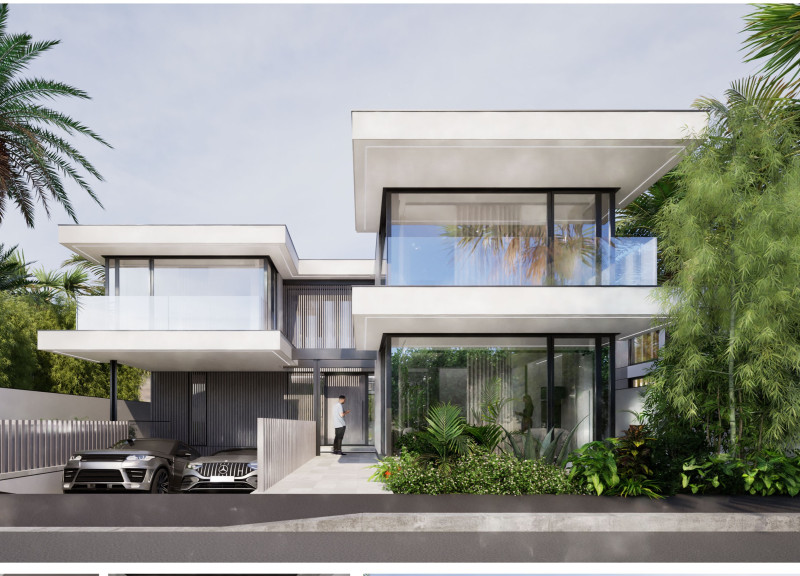5 key facts about this project
The building's design represents a harmonious blend of form and function, where every element is deliberate and considered. Upon entering, visitors are greeted by a seamless transition from the exterior to the interior, encouraging exploration and interaction. The layout has been skillfully organized to facilitate ease of movement, with open spaces that promote collaboration and social interaction among occupants. The architecture effectively balances private and public areas, ensuring that areas designated for respite do not detract from communal spaces meant for engagement.
The project’s exterior is notable for its material palette, which includes reinforced concrete and tempered glass, thoughtfully chosen to withstand local weather conditions while offering aesthetic appeal. The use of reclaimed wood adds warmth to the design, creating inviting and comfortable environments for the inhabitants. The building's facade features composite cladding, enhancing its durability while introducing modern texture and depth to the aesthetic profile. This nuanced approach to materiality underscores the architects’ commitment to sustainability, with elements that reduce the overall environmental footprint.
One of the unique design approaches of this project lies in its integration of nature. Large windows and strategically placed skylights maximize natural light throughout the space, reducing the need for artificial lighting and fostering a connection with the outdoors. This emphasis on natural light not only enhances the interior atmosphere but also plays a critical role in occupant well-being, aligning with contemporary architectural ideas that prioritize health and comfort.
Additionally, the project incorporates advanced technologies that streamline operations and improve energy efficiency. Smart building systems control lighting, temperature, and security, contributing to an improved user experience while promoting sustainability. The thoughtful inclusion of green roofs and rainwater harvesting systems illustrates a commitment to ecological responsibility, reflecting a growing trend in architecture that values environmental stewardship.
In terms of user experience, the project is designed with inclusivity in mind. Accessible entrances, clear pathways, and thoughtful signage all contribute to a welcoming environment, ensuring that all individuals can navigate the space comfortably. The interior spaces have been laid out to encourage interaction, with communal areas positioned to invite gatherings and shared activities, thereby strengthening community ties among users.
Overall, the architectural design stands as a testament to innovative thinking and deep respect for the local context. It not only meets the functional requirements of its users but also enriches their experience through thoughtful material choices and design that harmonizes with its surroundings. The project exemplifies how architecture can serve not only as a physical shelter but as a catalyst for community interaction and environmental responsibility. For those interested in a deeper understanding of this architectural endeavor, exploring the architectural plans and sections will provide valuable insights into the meticulous considerations that shaped this project. Dive into the details of this design to fully appreciate its layered complexities and the intentional choices made throughout the creative process.


























